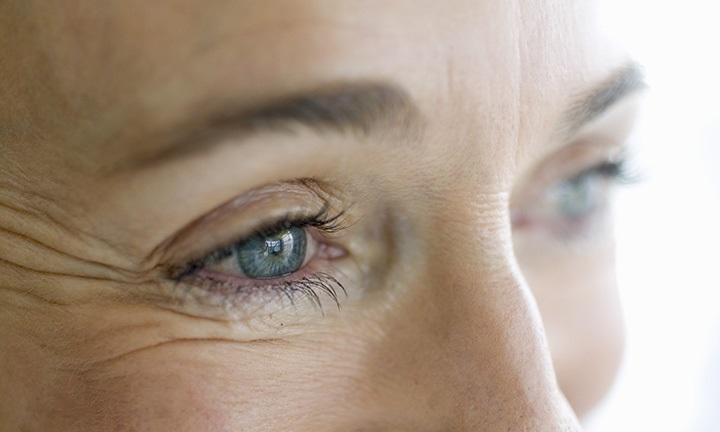Eye Health: Understanding Common Eye Problems
Our vision is like our window to the world, allowing us to see the beauty around us. Our eyes, like any other part of our body, can sometimes encounter problems. These issues can range from minor annoyances to serious conditions that affect our vision. Let's learn more about seven common eye problems to shed light on what they are and how certain eye disorders can be managed. You’ll also learn how preventive measures like regular eye exams can be so important to your vision.
1. Age-Related Macular Degeneration (AMD)
Imagine a tiny spot in the center of your vision becoming blurry or darkened. That's what happens in age-related macular degeneration. It's an eye disease that mostly affects older adults and can make it difficult to read, drive, or recognize faces. Although there's no cure, treatments like eye injections or laser therapy can help slow down its progression.
2. Amblyopia (Lazy Eye)
Amblyopia, or what some call a "lazy eye," occurs when one eye is favored by the brain (typically in childhood), putting most of the task of seeing with just one eye. It can lead to poor vision in the other eye, making it less sharp than the other. Early detection is key, and treatments such as wearing an eye patch, using special eye drops, and ensuring your eyewear has the proper prescription can help improve vision.
3. Cataracts
Ever feel like you're looking through a foggy window? Your foggy vision might be due to cataracts. Cataracts cause the lens of the eye to become cloudy, leading to blurry vision and difficulty seeing in bright light. Aging is the most common cause of cataracts. Luckily, detection of cataracts is simple with an eye exam. If needed, cataract surgery is quite common and highly effective, restoring clear vision by replacing the cloudy lens with a clear artificial lens.
4. Diabetic Retinopathy
For those living with diabetes, the eyes can be particularly vulnerable. Diabetic retinopathy occurs when high blood sugar levels damage the blood vessels in the retina. Diabetic retinopathy can lead to vision problems or even blindness if left untreated. Managing blood sugar levels through medication, diet, and lifestyle changes can help prevent or slow down the progression of diabetic retinopathy.
5. Glaucoma
Glaucoma is often called the "silent thief of sight" because it can sneak up on you without any noticeable symptoms at first. Glaucoma occurs when the pressure inside the eye builds up and damages the optic nerve, leading to vision loss. Half of people with glaucoma don’t even know they have it! Regular eye check-ups are essential for catching glaucoma early, and treatments like eye drops, laser therapy, or surgery can help manage it and prevent further vision damage.
6. Refractive Errors
Have you ever struggled to see things clearly, either up close or far away? Refractive errors like nearsightedness, farsightedness, and astigmatism are common culprits. Refractive errors happen when the shape of the eye prevents light from focusing properly on the retina, causing blurry vision. Refractive errors are the most common type of vision problems — more than 150 million Americans have a refractive error! Thankfully, glasses, contact lenses, or refractive surgery can correct these issues for most people and restore clear vision.
7. Strabismus (Crossed Eyes)
When the eyes aren't properly aligned and point in different directions, it's called strabismus or crossed eyes. Strabismus can cause double vision, eye strain, or even loss of depth perception. Strabismus in adults can be caused by accidents, head injury or health problems (such as diabetes or thyroid eye disease). Treatment for strabismus can include eye exercises or surgery to help straighten the eyes and improve vision.
Importance of Eye Exams
All of the eye problems in this article can be detected with regular eye exams. Routine comprehensive eye exams typically include screenings for glaucoma, macular degeneration, and cataracts. When eye disease diagnosis happens early, treatment options are better! For example, refractive errors are usually corrected with glasses or contact lenses — a simple fix for most of us.
Having vision insurance can make regular eye exams, as well as corrective eyewear, simple and cost-effective. When you choose your vision insurance plan, make sure that they offer a large network of providers in your area, and compare the benefits you’ll have access to. These benefits may include discounted glasses or contacts, low-cost eye exams, and more. VSP® Individual Vision Plans make it simple to find an eye doctor near you.
Conclusion: Seeing a Brighter Future
Our eyes are precious, and taking care of them is essential for maintaining good vision and overall well-being. By understanding common eye disorders and diseases, we can be proactive in seeking timely treatment and making lifestyle choices that promote eye health. In addition to your regular eye exams, eat a balanced diet rich in eye-friendly nutrients, protect your eyes from harmful UV rays, and give them a break from digital screens now and then. With a little TLC, you can help protect your vision for years to come!
Disclaimer: Information received through VSP Individual Vision Plans’ social media channels is for informational purposes only and does not constitute medical advice, medical recommendations, diagnosis, or treatment. Always seek the advice of your physician or other qualified health provider with any questions you may have regarding a medical condition.
Reviewed by Dr. Valerie Sheety-Pilon:
Dr. Valerie Sheety-Pilon is Vice President of Clinical and Medical Affairs at VSP Vison Care where she helps drive strategic initiatives aimed at raising awareness about vision, eye health and its connection to overall wellness, while providing insight into medical advancements that seek to benefit patient care. She also provides oversight of VSP programs to address gaps in care for some of the most high-risk populations, including those living with diabetes.
With more than two decades of experience as a Doctor of Optometry, Dr. Sheety-Pilon has dedicated much of her time to clinical research across numerous ophthalmic subspecialties and has an established history of helping patients through novel therapeutic agents and clinical adoption of transformative technology in the areas of digital health, pharmaceuticals, and medical devices.
Prior to joining VSP Vision in 2019, Dr. Sheety-Pilon served as Adjunct Clinical Professor at Illinois College of Optometry, held various executive positions within the eye health industry, and has extensive experience managing and practicing within an ophthalmology and optometry practice.
Your vision. Your way.
Not covered for vision? Get an individual plan, customized for you – including where you want to use it: at the doctor, in a retail location, or even online.

Contact Lenses: Frequently Asked Questions
If you are new to wearing contact lenses, you may have questions about how to care for your contact lenses, where or how to buy contact lenses, or j...

The Top Foods and Nutrients to Help Your Vision
Goals are typically filled with resolutions tied to health and wellness. This year, your goal to a healthy body can include your vision. According t...

Eye Infection: Symptoms, Causes, and Treatment
While some eye infections have the possibility to damage your eyes if left untreated, other eye infections are fairly common, can be easily treated,...

